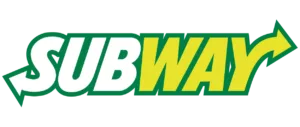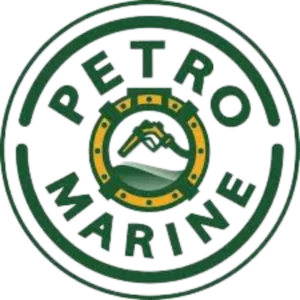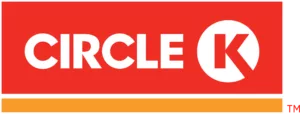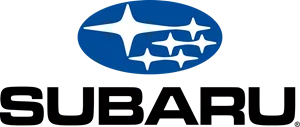Every sprawling jobsite has that fragile pause when the rumble of machinery fades and someone needs to call out a risk. If no one speaks, complacency rules. If a voice rises at the right moment, injuries and delays evaporate before they form. Too often the difference between silence and intervention traces back to a single credential: OSHA-30.
Most crews view the course as a regulatory hurdle—thirty hours of fall-protection tables and penalty charts. Yet hidden inside those technical slides is a complete playbook for influence. Master the communication segments, the incident-investigation framework, and the discipline of pre-task briefings, and suddenly a card transforms from compliance paperwork into a leadership passport.
The Hidden Leadership Curriculum Inside OSHA-30
Beneath the compliance veneer, OSHA-30 trains the mind to guide teams through uncertainty. Every time a module asks learners to identify a hazard, it is also coaching them to sharpen storytelling. Narrating how a loose guardrail becomes a cascading incident forces each observer to assemble a timeline that keeps listeners engaged. The process mirrors the narrative arc executives expect when projects are pitched at a conference table.
The incident-investigation chapter offers another unadvertised benefit: emotional intelligence. The template for root-cause analysis demands objective language and balanced viewpoints, skills that calm tempers after a near miss. By practicing impartial dialogue in the field, supervisors build the composure needed for future high-pressure negotiations about budgets and deadlines.
OSHA-30 also requires precise documentation—names, timestamps, corrective measures. Executives value clarity, and e-mails that distill complex events into three decisive sentences become career accelerators. When daily journals adopt the same clarity, trust grows between field and office. Structured communication, concise reports, and data-backed decisions begin on the training screen but echo in every team huddle that follows.
Finally, the course emphasizes the hierarchy of controls, indirectly teaching prioritization. Deciding whether elimination, substitution, engineering, or administrative actions suit a problem is an exercise in resource allocation—exactly the judgment call project managers make when schedules tighten. By internalizing these layers, a crew member rehearses strategic thinking long before the first promotion interview.
Bloomberg Law argues that management-led safety culture foundations turn compliance modules into everyday mindset, echoing OSHA-30’s hidden agenda.
From Risk Communication to Crew Motivation: Soft Skills that Stick
Technical proficiency keeps equipment running; clear communication keeps people believing the plan. OSHA-30 introduces “upward, lateral, and downward” channels that mirror real-world influence paths. Speaking upward secures resources, lateral dialogue moves subcontractors toward consensus, and downward clarity reassures apprentices who hesitate to speak.
Imagine a windy rooftop where an HVAC unit waits for placement. A competent leader monitors gust speed and relays: “Wind is topping twenty miles per hour—switch to tool tethers and hard-hat shields.” TIME’s report on how extreme heat threatens U.S. outdoor workers reinforces why briefings must translate weather data into actionable steps that resonate across every trade.
Motivation flourishes when information flows freely. Pre-task briefings should never resemble checklist recitations. Instead, they feel like quick game plans that link hazard control to reduced rework—every corrected mis-angled flange costs three hours. Forward-thinking crews that embed proactive onboarding to prevent site accidents report sharper attention during daily huddles and fewer near misses in the first project quarter.
Document these cause-and-effect relationships. A running log that pairs clear briefings with reductions in minor injuries and on-time milestone completions becomes persuasive ammunition during quarterly reviews. Decision makers rarely resist proof that two-minute huddles save forty labor hours in a month.
Case Study 1: The Technician Who Formed a Safety Committee
Two years into her electrical apprenticeship on a Phoenix hospital renovation, technician Ariana Torres completed OSHA-30 and noticed a gap: site audits flagged the same hazards week after week, yet corrective momentum stalled. Instead of lodging complaints, she drafted a one-page summary listing the top five recurring risks—pinched fingers, scattered conduit, silica dust, crowded stairwells, uninspected ladders—complete with frequency counts drawn from inspector notes. She hand-delivered the sheet to every trade foreman and invited nominations for a lunchtime discussion group. Pizza sealed the deal.
The first gathering drew twelve volunteers. They began with quick wins—an agreed-upon lay-down area untangled extension cords and removed trip points the same afternoon. A shared lockout/tagout checklist followed, reducing unauthorized energizations by one-third within three months. The group even launched a “safety shout-out” board, recognizing workers who spotted early warnings. Peer recognition outperformed top-down mandates, and participation climbed without financial incentives.
Key Takeaways
Ariana’s committee succeeded because the initiative combined data, inclusivity, and tangible improvements. Recurring hazards were quantified, meeting times respected lunch breaks, and each suggestion carried a target timeline. Management noticed falling incident totals and improved morale scores, elevating Ariana from journeyman to supervisory candidate.
Case Study 2: Cutting Rework through Pre-Task Briefings
Pipefitter Juan Ramirez finished OSHA-30 shortly before joining a Houston semiconductor expansion project. Remembering the course’s section on risk aggregation, he redesigned morning briefings. Tasks were broken into micro-steps: material staging, weld sequence, interim quality checks. Each step displayed a potential cost if done incorrectly—mis-aligning a flange added three hours in rework and inspection delays.
Boston contractors who paired Juan’s micro-step model with AI-driven site analytics slashing hazard exposure recorded nearly identical savings. Over six weeks, misalignment incidents on Juan’s crew alone fell 18 percent. The general contractor, tracking labor and scrap metal usage, tallied a $27,000 savings and, more important, a two-day schedule gain on a critical path.
Key Takeaways
Quantifying rework clarified stakes, peer respect grew because savings were shared openly, and documented success revealed a problem-solver rather than just a skilled welder. Juan transitioned into field safety coordination within a year, evidence that soft-skill mastery converts into upward mobility.
Case Study 3: Incident Documentation as a Ladder to Management
During a Chicago theater retrofit in mid-winter, carpenter Leah Morgan witnessed a scaffold plank failure that fortunately caused no injuries. Volunteering to draft the incident report, she applied OSHA-30’s root-cause template. Factors included sub-freezing temperatures shrinking wood fibers, absence of a toe-board, and inspection pressure driven by a looming opening-night date. Recommendations—cold-rated composite planks, QR-coded inspection tags, daylight scheduling—were concise and actionable.
Management adopted every suggestion. Scaffold-related near misses vanished across the next six months, and inspection time dropped because QR codes accelerated record retrieval. Executives recognized that thorough analysis and solution pairing prevented liability and schedule slide, positioning Leah for a project-manager opening. Her card had morphed from compliance proof into leadership evidence.
Key Takeaways
Comprehensive documentation can re-engineer workflows, pairing findings with fixes elevates status, and tangible data builds trust among risk-averse executives.
Presenting Safety ROI to the C-Suite
Walking into a glass-walled boardroom with hard data transforms perception. Executives filter information through cost, schedule, and reputation lenses. A clear framework keeps attention: cost avoidance, schedule assurance, brand leverage.
Start with direct cost avoidance. Multiply the average expense of an OSHA-recordable incident by the number of incidents prevented on recent projects. C-suite skeptics soften when injury payouts are contrasted with the ROI of upgrading to safer alternatives to high-risk forklifts, a transition that trimmed one manufacturer’s incident costs by 38 percent last year.
Schedule impact comes next. Overlay lost-time data on Gantt charts to show regained weeks. Fewer injuries equal fewer stoppages, and even modest gains compound across multi-year builds. Independent analysis confirms that safety investments boost organizational performance, linking lower incident rates to stronger margins and enduring customer loyalty.
Reputation closes the argument. Adding a snapshot of versatile jobs to get with OSHA 30 card holders underscores how the credential helps attract and retain talent.
The 90-Second Safety ROI Pitch:
- Open with one clear metric, such as a 40 percent drop in rework.
- Present the cost-avoidance calculation using site-specific numbers.
- Display overlapping Gantt and incident charts to visualize schedule gains.
- Conclude with evidence that clients prioritize clean safety records.
A Language-Swap Glossary: Translating Hazards for Decision Makers
Technical slang, while efficient among trades, can stall momentum in executive settings. Translating terms into fiscal or reputational stakes keeps discussions on point: “near miss” becomes “unplanned production interruption narrowly avoided,” “confined space” converts to “high-liability zone requiring specialized labor cost,” and “root-cause analysis” shifts into “process-improvement roadmap for future savings.” Framing hazards as budget levers ensures rapid alignment between field priorities and corporate objectives.
An analogy clarifies the shift: jargon is a toolbox. Executives may not recognize each wrench, but labeling a wrench with the budget line it tightens makes the tool indispensable. Consistent translation nurtures partnerships, ensuring safety conversations receive the same attention as revenue forecasts.
Conclusion
OSHA-30 packs more than regulatory facts; embedded within its hours is a handbook for guidance. Communicating risk with authority, dissecting incidents with impartial precision, and planning tasks with motivational clarity cultivate a safety-first culture where intervention is instinctive. Once these skills circulate on site, near misses decline, rework fades, and timelines stabilize.
Case studies confirm the trajectory. A technician formed a committee that rewrote on-site routines, a pipefitter turned morning briefings into cash-savers, and a carpenter converted a near disaster into a management promotion. Their stories illustrate a universal principle: mastering the course’s hidden leadership curriculum builds influence that starts at ground level and rises through every floor of an organization.














